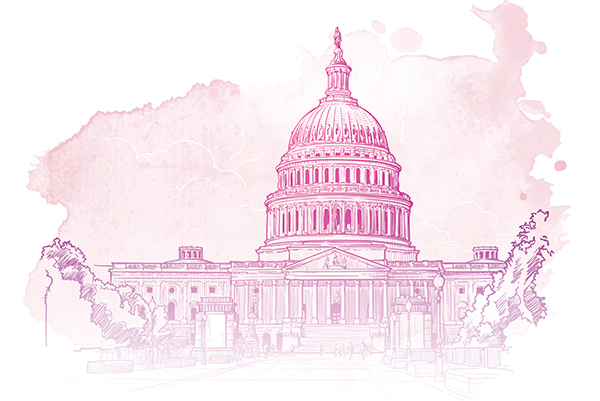A Lupus Bill on Capitol Hill

Since the Lupus Foundation of America was created in 1977, federal advocacy has been at the forefront of our work. Legislation to fund lupus research at key federal agencies has been critical to ensuring new and continued research to better understand lupus and how it can be treated.
Earlier this year, Congress began its annual process to approve funding levels for the 12 appropriations bills which fund the entire federal government. Every program, including the Lupus Research Program at the Department of Defense, must be funded through the appropriations process.
Here’s a look at how that happens.
All appropriations bills start in the House of Representatives. The House Appropriations Defense Subcommittee is primarily responsible for the Department of Defense (DoD) Appropriations bill. The 18 committee members “mark up” and review the bill and hold hearings on the programs the bill will fund. The subcommittee votes to advance it to the full Appropriations Committee.
The Appropriations Committee, which consists of 53 members, then reviews the DoD Appropriations bill and votes to approve the bill.
The bill now heads to the full House of Representatives for a vote. 435 members vote on the bill. In June, the House voted to pass the DoD Appropriations bill, including $10 million for the Lupus Research Program, in part due to the hard work of all the lupus advocates!
Meanwhile, the Senate Appropriations Committee—which has a similar committee approval process—starts its work.
Once the full Senate votes on its version of the DoD Appropriations bill, the two chambers meet in a joint committee to “iron out” the differences. Each chamber then votes on the amended bill. If it passes, the bill is sent to the President to veto it or to sign it into law.
At the beginning of the new fiscal year, October 1, the DoD is then allowed to spend their newly appropriated funds.

To learn more about the Lupus Research Program at the DoD or about the federal appropriations process, go to lupus.org/advocate



